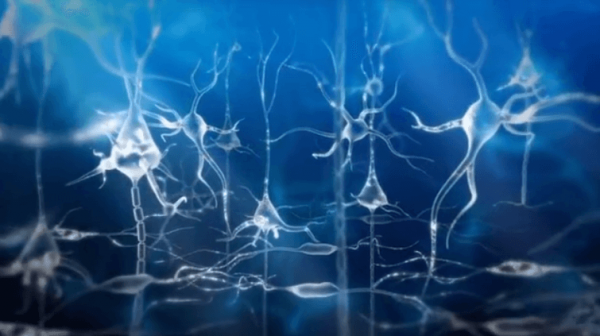Brain Waves: Delta, Theta, Alpha and Gamma


Written and verified by the psychologist Valeria Sabater
There are 5 kinds of brain waves and they work almost like musical notes. Some are low frequencies, others are high frequencies. Together they have the power to create harmony. Your thoughts, emotions and sensations in perfect balance, centered and open to everything around you.
Have you ever heard someone say something like, “I want to train my Alpha brain waves to be more relaxed and get more inner peace”? In fact, people have even been talking about bio-feedback machines that can stimulate certain brain waves to get us into certain states of consciousness. Well, we should step carefully here…
“The eye grasps… The brain gives things shape”
-Paul Cézanne-
When it comes to our brain waves, the key to authentic health and happiness lies in allowing each of them to work in their way, at their frequency and at their optimum levels. We should also remember that they aren’t static. Rather, they change as we get older. So, the point isn’t to get obsessed with improving our Beta waves for better focus or our Gamma waves to get into a spiritual state.
The truth is that no one type of brain wave is better or more “special” than another. They are all important, because they’re all the result of the electrical activity of our neurons and mental states.
The different kinds of brain waves
We all know that the brain is an electrochemical organ. In fact, neurologists explain that if all our nerve cells were to activate at the same time there would be enough energy to switch on a light bulb. It’s pretty amazing!
This electrical activity is what is responsible for the different kinds of brain waves. It’s a complex, fascinating, perfect process where each activity, mental state and thought is capable of emitting a kind of brain wave.
Over the course of the day, our brain keeps all five kinds of brain waves active. Depending on what we’re doing at the time, some brain waves will be more active in certain areas of the brain while others will be less active in other areas, but none of them will be “switched off” per se.
For example, your Alpha waves may be intensely active in your frontal lobe at some point, which will make you feel somewhat anxious. However, these same Alpha waves in the occipital area would imply an ideal state of relaxation. These nuances are good to bear in mind. Let’s take a look now at the different kinds of brain waves and what they do.

1. Delta waves (1 to 3 Hz)
Delta waves have the greatest wave amplitude and are related to deep but dreamless sleep. Interestingly, they are very common in babies and small children. The older we get the fewer of these brainwaves we produce. Our sleep and ability to relax gradually get worse over the years.
In general, Delta brain waves are related to unconscious bodily activities, like regulating your heart rate and digestion.
- What happens if Delta brain waves appear in very high peaks in an electroencephalogram (EEG)? It could be an indication of a brain injury, learning difficulties or even severe ADHD.
- What happens if they appear in dips in an EEG? It could indicate poor sleep.
- A healthy level of delta waves is good for your immune system, sleep, and learning.
2. Theta waves (3.5 to 8 Hz)
This second kind of brain waves goes from 3.5 to 8 Hz and is mostly related to imagination, reflection and sleep. Fun fact: Theta waves are more active when we’re experiencing very deep emotions.
For example, when we’ve just finished some effort or task that took a lot of energy, when we relax and let our imagination “fly”, Theta waves take control in our brain.
- A high peak of Theta waves may be related to a depressive disorder or lack of attention.
- Low peaks correspond to anxiety, stress and low emotional self-awareness.
- A healthy level of Delta waves is good for creativity, emotional connection and intuition.

3. Alpha waves (8 to 13 Hz)
Alpha waves arise in those in-between, twilight times when we’re calm but not asleep. It’s when we’re relaxed and ready for meditation. When we’re on the couch watching TV or in bed relaxing, but before falling asleep.
- A high level of Alpha waves will keep us from focusing and may even make us feel like we don’t have energy.
- A low level of Alpha waves corresponds to anxiety, stress and insomnia.
4. Beta waves (12 to 33 Hz)
We’ve now crossed from low/moderate brain waves to a higher level. We’re now in that higher spectrum of frequencies that come from intense neuronal activity. They’re very interesting as well as complex. They have to do with times when we’re giving our full attention, very alert and on the lookout for stimuli.
Activities like driving, taking an exam, and giving a presentation are good examples. However, overactivation of our neurons can lead to harmful anxiety and stress.
- A low level of Beta waves, on the other hand, would lead to an overly relaxed, laid-back, even depressive state…
- An ideal level helps us be much more open and focused. This is when we’re best at solving problems.
5. Gamma waves (25 to 100 Hz)
When you hear the word “gamma”, what may immediately come to mind are the famous gamma rays, with their long wavelength and high electromagnetic radiation. Well, gamma waves and gamma rays only have one thing in common: their very high frequency.

Neuroscientists are now starting to learn more facts about gamma waves, but until recently very little was known about them. Plus, it’s very hard to capture them in an EEG. They originate in the thalamus and move from the back part of the brain to the front with incredible speed.
- Gamma waves are associated with high level cognitive processing tasks.
- They are related to our learning style, our ability to take in new information, and our senses and perceptions.
- For example, people with mental problems or learning difficulties tend to have less than half the usual Gamma wave activity.
- High peaks of Gamma waves are seen during states of happiness.
- The REM sleep phase also tends to be characterized by high levels of activity in this range of frequencies.
In conclusion, learning about the different kinds of brain waves enables us to understand that our mental processes, our emotions, our activities and our behaviors generate “energy” in our brain. The key, therefore, is to be aware of it, learn to relax and be more receptive and intuitive, and to work on emotional management so that our anxiety works in our favor rather than against us.
There are 5 kinds of brain waves and they work almost like musical notes. Some are low frequencies, others are high frequencies. Together they have the power to create harmony. Your thoughts, emotions and sensations in perfect balance, centered and open to everything around you.
Have you ever heard someone say something like, “I want to train my Alpha brain waves to be more relaxed and get more inner peace”? In fact, people have even been talking about bio-feedback machines that can stimulate certain brain waves to get us into certain states of consciousness. Well, we should step carefully here…
“The eye grasps… The brain gives things shape”
-Paul Cézanne-
When it comes to our brain waves, the key to authentic health and happiness lies in allowing each of them to work in their way, at their frequency and at their optimum levels. We should also remember that they aren’t static. Rather, they change as we get older. So, the point isn’t to get obsessed with improving our Beta waves for better focus or our Gamma waves to get into a spiritual state.
The truth is that no one type of brain wave is better or more “special” than another. They are all important, because they’re all the result of the electrical activity of our neurons and mental states.
The different kinds of brain waves
We all know that the brain is an electrochemical organ. In fact, neurologists explain that if all our nerve cells were to activate at the same time there would be enough energy to switch on a light bulb. It’s pretty amazing!
This electrical activity is what is responsible for the different kinds of brain waves. It’s a complex, fascinating, perfect process where each activity, mental state and thought is capable of emitting a kind of brain wave.
Over the course of the day, our brain keeps all five kinds of brain waves active. Depending on what we’re doing at the time, some brain waves will be more active in certain areas of the brain while others will be less active in other areas, but none of them will be “switched off” per se.
For example, your Alpha waves may be intensely active in your frontal lobe at some point, which will make you feel somewhat anxious. However, these same Alpha waves in the occipital area would imply an ideal state of relaxation. These nuances are good to bear in mind. Let’s take a look now at the different kinds of brain waves and what they do.

1. Delta waves (1 to 3 Hz)
Delta waves have the greatest wave amplitude and are related to deep but dreamless sleep. Interestingly, they are very common in babies and small children. The older we get the fewer of these brainwaves we produce. Our sleep and ability to relax gradually get worse over the years.
In general, Delta brain waves are related to unconscious bodily activities, like regulating your heart rate and digestion.
- What happens if Delta brain waves appear in very high peaks in an electroencephalogram (EEG)? It could be an indication of a brain injury, learning difficulties or even severe ADHD.
- What happens if they appear in dips in an EEG? It could indicate poor sleep.
- A healthy level of delta waves is good for your immune system, sleep, and learning.
2. Theta waves (3.5 to 8 Hz)
This second kind of brain waves goes from 3.5 to 8 Hz and is mostly related to imagination, reflection and sleep. Fun fact: Theta waves are more active when we’re experiencing very deep emotions.
For example, when we’ve just finished some effort or task that took a lot of energy, when we relax and let our imagination “fly”, Theta waves take control in our brain.
- A high peak of Theta waves may be related to a depressive disorder or lack of attention.
- Low peaks correspond to anxiety, stress and low emotional self-awareness.
- A healthy level of Delta waves is good for creativity, emotional connection and intuition.

3. Alpha waves (8 to 13 Hz)
Alpha waves arise in those in-between, twilight times when we’re calm but not asleep. It’s when we’re relaxed and ready for meditation. When we’re on the couch watching TV or in bed relaxing, but before falling asleep.
- A high level of Alpha waves will keep us from focusing and may even make us feel like we don’t have energy.
- A low level of Alpha waves corresponds to anxiety, stress and insomnia.
4. Beta waves (12 to 33 Hz)
We’ve now crossed from low/moderate brain waves to a higher level. We’re now in that higher spectrum of frequencies that come from intense neuronal activity. They’re very interesting as well as complex. They have to do with times when we’re giving our full attention, very alert and on the lookout for stimuli.
Activities like driving, taking an exam, and giving a presentation are good examples. However, overactivation of our neurons can lead to harmful anxiety and stress.
- A low level of Beta waves, on the other hand, would lead to an overly relaxed, laid-back, even depressive state…
- An ideal level helps us be much more open and focused. This is when we’re best at solving problems.
5. Gamma waves (25 to 100 Hz)
When you hear the word “gamma”, what may immediately come to mind are the famous gamma rays, with their long wavelength and high electromagnetic radiation. Well, gamma waves and gamma rays only have one thing in common: their very high frequency.

Neuroscientists are now starting to learn more facts about gamma waves, but until recently very little was known about them. Plus, it’s very hard to capture them in an EEG. They originate in the thalamus and move from the back part of the brain to the front with incredible speed.
- Gamma waves are associated with high level cognitive processing tasks.
- They are related to our learning style, our ability to take in new information, and our senses and perceptions.
- For example, people with mental problems or learning difficulties tend to have less than half the usual Gamma wave activity.
- High peaks of Gamma waves are seen during states of happiness.
- The REM sleep phase also tends to be characterized by high levels of activity in this range of frequencies.
In conclusion, learning about the different kinds of brain waves enables us to understand that our mental processes, our emotions, our activities and our behaviors generate “energy” in our brain. The key, therefore, is to be aware of it, learn to relax and be more receptive and intuitive, and to work on emotional management so that our anxiety works in our favor rather than against us.
This text is provided for informational purposes only and does not replace consultation with a professional. If in doubt, consult your specialist.







